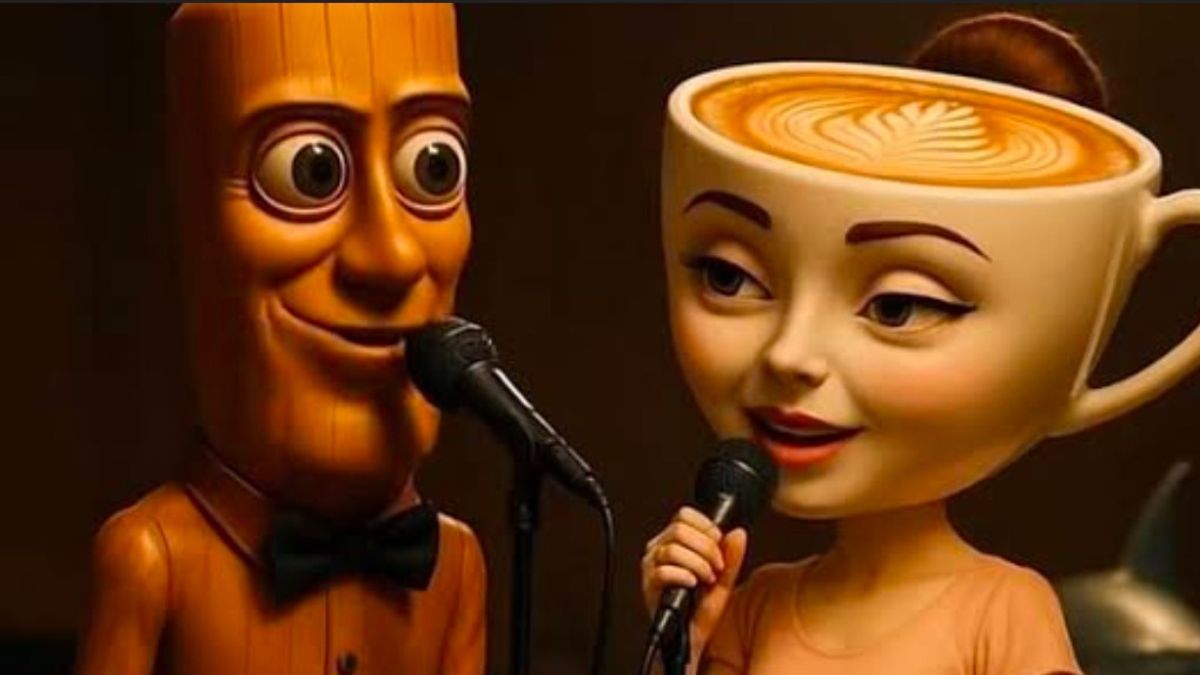
The digital landscape of 2025 has birthed a new generation of memes — specifically, brain rot memes, a term referring to absurd, often contextless humor that thrives on overstimulation and chaotic delivery. These memes dominate TikTok, X (formerly Twitter), and Instagram Reels, influencing online discourse, shaping Gen Z humor, and reflecting the internet’s growing desensitization. Below are five social media brain rot memes of 2025 you need to know, each dissected for its origin, usage, and cultural footprint.
1. Tung Tung Sahur Italian Brain Rot Edit – Ramadan Chaos Goes International
“Tung tung tung sahurrrr!” — This traditional Indonesian Ramadan wake-up chant was already a cultural staple in Southeast Asia. But in 2025, it found bizarre rebirth in Italy through AI-edited TikToks where Venetian canals, Michelangelo statues, and cappuccino bars blast the chant at 4 AM, with caption overlays like “POV: You’re in Florence but it’s Ramadan.” The sound is typically paired with unrelated hyper-zoomed, heavily-filtered clips of historical landmarks or NPC-like locals walking aimlessly.
It takes a culturally specific context and reinterprets it in surreal, out-of-place European settings. The meme spread due to its absurdity and the visual/audio dissonance. Italian creators embraced it, even remixing it with opera music and accordion covers. It’s brain rot at its finest — sensory overload and cultural mashups with no explanation.
2. Ballerina Cappuccino – AI-Generated Elegance Turned into Chaos
The “ballerina cappuccino” meme began with AI-generated images of ballerinas performing grand jetés midair while spilling cappuccinos, often in Renaissance-style backdrops. Initially posted as digital art experiments, the images spiraled into meme territory when paired with over-dramatic classical music or narrations like “This is what mental clarity looks like” — all ironically.
By March 2025, the meme evolved. TikTok users created edits showing themselves trying to “embody the ballerina cappuccino spirit” — usually spinning with lattes and falling in slow motion. The meme was co-opted by fashion and café accounts in Milan, turning it into a full-blown aesthetic joke. It mocks digital perfectionism by exaggerating elegance into impractical nonsense. It also plays on the AI-overuse trend, reminding viewers how artificial and out-of-touch digital content can become.
3. Mr. Turtleneck’s Existential ASMR – Anti-Motivation Becomes a Vibe
A fictional character named Mr. Turtleneck, invented by a TikTok creator in Berlin, started popping up in dimly lit videos sipping wine, staring at walls, and whispering depressing monologues like:
“You don’t need to chase your dreams. Just let them fade gently. Like my will to get up today.”
These lo-fi, nihilistic ASMRs quickly turned into a meme format, with creators parodying self-help influencers and replacing affirmations with cryptic deadpan one-liners. Eventually, edits started including crying cats, vaporwave backgrounds, and reversed classical music. It satirizes hustle culture by going to the opposite extreme — glorifying inaction and existential dread. Mr. Turtleneck became an icon of digital lethargy, often captioned as “when your serotonin relies on WiFi.”
4. POV: You’re the Last Brain Cell in IKEA – Surreal Roleplay Edits
This meme trend exploded after a creator posted a TikTok captioned “POV: You’re the last functioning brain cell trying to navigate IKEA on a Monday afternoon.” The video was a chaotic montage: flashing IKEA arrows, random Swedish meatball close-ups, echoing toddler screams, and meme sound effects like “vine boom” and distorted SpongeBob laughs.
It soon became a viral format. Users re-edited the meme into other overstimulating settings — such as “POV: You’re the last brain cell doing math at 3 AM” or “POV: Last neuron surviving a Zoom meeting.” It’s now a go-to format for dramatizing brain fog and sensory overload. It visualizes mental deterioration through relatable chaos. The IKEA setting works because it’s familiar, yet unnavigable — a perfect metaphor for overstimulation and cognitive disarray.
5. Me After One Sip of Gender – Fluid Identity Meets Beverage Culture
“Me after one sip of gender” is a meme format where users post themselves dramatically transforming into flamboyant or hyper-stereotyped versions of gendered personas after sipping a random beverage — often absurd combos like “lavender oat milk + Red Bull” or “matcha infused with moon water.”
This trend grew out of queer TikTok and has since become a mainstream brain rot phenomenon. It parodies how minor aesthetic choices are exaggerated into identity statements online. The meme gained traction in both humorous and empowering ways, reflecting a hyper-self-aware Gen Z humor that critiques how personal identity is packaged in consumer culture.
It’s identity performance turned satire, blending beverage microtrends with existential humor. The visual contrast between “before sip” (deadpan) and “after sip” (edited sparkles, RuPaul quotes, or hyperpop music) makes it visually irresistible.
These 2025 brain rot memes aren’t just internet noise — they’re reflective of a generation deeply online, burnt out, and finding catharsis in surrealist humor. Each meme is a digital artifact of a specific cultural moment, layered in irony, absurdity, and commentary. Whether it’s AI elegance gone rogue or IKEA mental breakdowns, these viral trends remind us: the internet may be melting our brains, but at least we’re laughing through the chaos.
